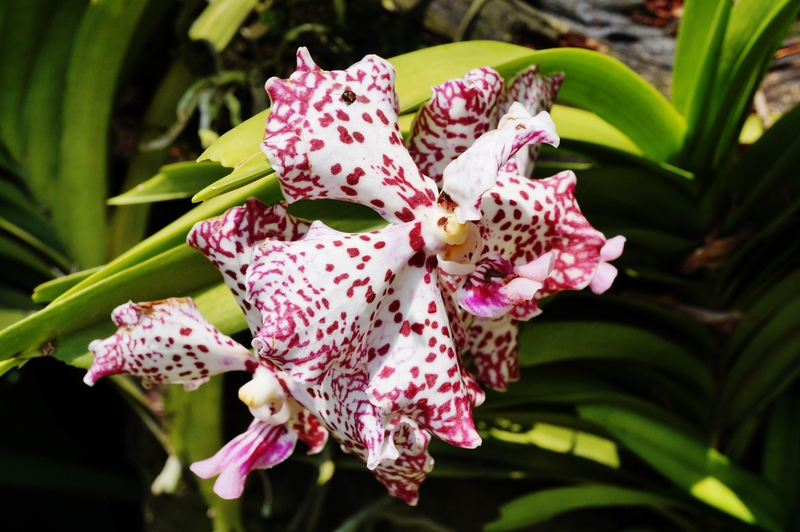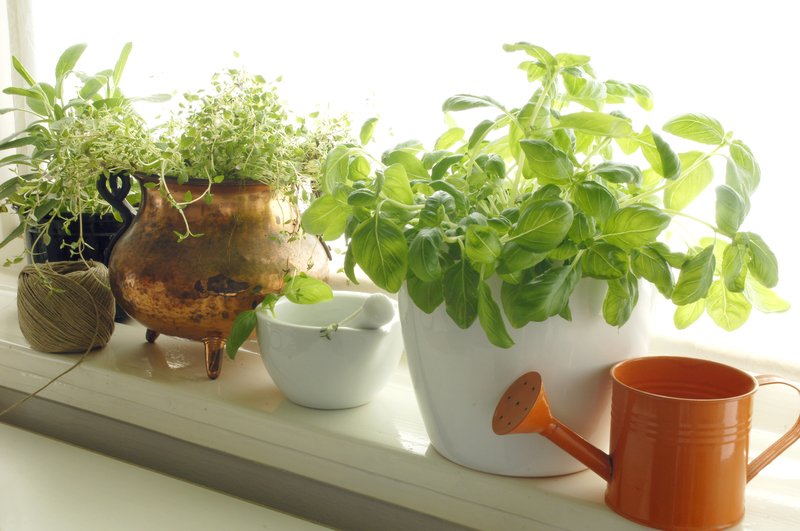Best Pollinator-Friendly Plants for Window Box Gardens
Whether you're an avid gardener or a city dweller with limited space, window box gardens offer an amazing opportunity to invite nature closer to your home. In today's world, pollinator populations, especially bees and butterflies, are facing significant challenges due to habitat loss and pesticide use. By creating a vibrant pollinator-friendly window box, you not only beautify your space but also provide critical resources to these essential creatures.
Why Plant Pollinator-Friendly Window Boxes?
Pollinators--including bees, butterflies, moths, and even hummingbirds--play a fundamental role in plant reproduction and global food production. Without pollinators, many of the plants that provide us with fruits, vegetables, and flowers would fail to reproduce. Here are key reasons why choosing the best window box plants for pollinators is so important:
- Biodiversity Boost: Supports urban and suburban wildlife by providing nectar and pollen sources.
- Compact Ecosystem: Even within small spaces, window boxes contribute to a greener environment and connect fragmented habitats.
- Beautification: Attracting colorful butterflies and buzzing bees adds animated life and beauty to your windowsills.
- Educational: Observation opportunities for kids and adults on pollinator visits and plant life-cycles.

Key Traits of Effective Pollinator Plants for Window Boxes
To create a flourishing pollinator-friendly window garden, select plants with these essential qualities:
- Continuous Bloom: Choose a mix that ensures flowers are available from early spring to late autumn.
- Accessible Flowers: Single, open blooms offer easy access to nectar and pollen, unlike complex double-flowered varieties.
- Bright Colors: Pollinators are drawn to vibrant pinks, purples, blues, yellows, and whites.
- Aromatic Blooms: Strong fragrances can be particularly alluring to bees and butterflies.
- Non-toxic: Select toxin-free species to keep pollinators safe and healthy.
Top 15 Pollinator-Friendly Plants for Window Boxes
Here's a comprehensive list of tried-and-true window box plants for pollinators, all compact, easy to grow, and suitable for various climates:
1. Lavender (Lavandula angustifolia)
- Bloom Time: Summer to early fall
- Why It's Great: Lavender's purple blooms are loaded with nectar and attract bees, butterflies, and even some beneficial beetles. The compact 'Hidcote' variety fits nicely in window boxes and offers delightful fragrance.
- Extra Tip: Thrives in well-drained soil and full sun.
2. Sweet Alyssum (Lobularia maritima)
- Bloom Time: Spring through fall (with deadheading)
- Why It's Great: This trailing annual creates fragrant, cloud-like mounds of tiny white or purple flowers. Its honey-laden scent is highly attractive to bees and hoverflies.
- Extra Tip: Works well as a window box border plant due to its cascading habit.
3. Nasturtium (Tropaeolum majus)
- Bloom Time: Summer to autumn
- Why It's Great: Vivid orange, yellow, and red blooms lure pollinators of all kinds, especially bees and butterflies. The edible flowers are both beautiful and useful in salads.
- Extra Tip: 'Alaska' and 'Jewel Mix' offer compact growth ideal for containers.
4. Salvia (Salvia farinacea or Salvia splendens)
- Bloom Time: Late spring to fall
- Why It's Great: Salvias boast spires of blue, purple, or red flowers that are irresistible to hummingbirds, bees, and butterflies.
- Extra Tip: Deadhead to prolong blooming. Drought-tolerant and heat-loving.
5. Marigold (Tagetes spp.)
- Bloom Time: Late spring to frost
- Why It's Great: Cheerful orange or yellow blooms provide nectar for a range of pollinators, including bees and hoverflies. Their scent can also deter garden pests.
- Extra Tip: Try 'French' or 'Signet' marigolds for compact window box gardens.
6. Coneflower (Dwarf Echinacea)
- Bloom Time: Mid-summer to early fall
- Why It's Great: While traditional coneflower can be tall, many dwarf varieties are perfect for pollinator window boxes. Their pink or white daisy-shaped flowers beckon butterflies and bees.
- Extra Tip: Allow seed heads to remain as food for goldfinches after blooming.
7. Calendula (Calendula officinalis)
- Bloom Time: Spring to autumn
- Why It's Great: Known as 'pot marigold,' calendula's orange and yellow blossoms are magnets for various bee species and beneficial insects.
- Extra Tip: Flowers are edible and can be used in salads or teas.
8. Verbena (Verbena hybrida)
- Bloom Time: Late spring to frost
- Why It's Great: Clusters of bright purple, pink, or red flowers are a beacon for butterflies. Verbena hangs gracefully in window box gardens, adding both height and trailing interest.
- Extra Tip: Requires full sun for best bloom performance.
9. Miniature Sunflower (Helianthus annuus 'Elf' or 'Sunspot')
- Bloom Time: Summer
- Why It's Great: Dwarf sunflowers can be grown in window boxes, offering bright blooms that draw bees and butterflies. Once seeds develop, birds are also attracted.
- Extra Tip: Choose varieties that remain under 2 feet tall.
10. Basil (Ocimum basilicum)
- Bloom Time: Summer (when allowed to flower)
- Why It's Great: Both culinary and ornamental, basil flowers are bee favorites. Let a few stems bolt to white or purple flower spikes to entice pollinators.
- Extra Tip: Harvest leaves regularly but allow some blooms for maximum pollinator impact.
11. Scabiosa (Scabiosa columbaria)
- Bloom Time: Summer to early fall
- Why It's Great: Commonly called 'pincushion flower,' scabiosa's blue, purple, or white domes attract bees and butterflies with their accessible nectar.
- Extra Tip: Pair well with silvery foliage plants such as lamb's ear.
12. Lobelia (Lobelia erinus)
- Bloom Time: Spring to late summer
- Why It's Great: Dazzling electric blue or white trailing flowers are especially loved by bumblebees and small solitary bees.
- Extra Tip: Prefers cooler temperatures or partial shade in hot climates.
13. Zinnia (Zinnia elegans, Dwarf Varieties)
- Bloom Time: Early summer to fall
- Why It's Great: Colorful, single-petaled zinnias offer open nectar sources for butterflies and native bees. Compact 'Thumbelina' and 'Profusion' series are perfect fits for window gardens.
- Extra Tip: Deadhead to keep the blooms coming.
14. Thyme (Thymus vulgaris and creeping types)
- Bloom Time: Late spring to mid-summer
- Why It's Great: Tiny pink or mauve blossoms attract honeybees. Plus, it's edible for your kitchen.
- Extra Tip: Grows well as a trailing or filler plant; drought-tolerant.
15. Compact Fuchsia (Fuchsia 'Dollar Princess')
- Bloom Time: Mid summer to frost
- Why It's Great: Famous for their pendulous, nectar-rich flowers, fuchsias are hummingbird magnets, and compact varieties work well in window boxes.
- Extra Tip: Prefer partial shade and regular moisture.
Designing a Pollinator-Friendly Window Box
Creating a thriving pollinator window box garden goes beyond selecting the right flowers. Consider these design strategies for maximum pollinator appeal and container success:
- Layer and Mix: Combine upright, mounding, and trailing plants. This not only maximizes window box color and texture but also provides different foraging heights and hiding spots for pollinators.
- Color Clusters: Plant multiples of the same color or species together. Pollinators are more likely to notice larger color patches when foraging.
- Vary Bloom Times: Mix early spring, summer, and fall-bloomers for season-long food supply.
- Avoid Pesticides: Do not use chemical pesticides, as even small traces can harm bees and butterflies.
- Add Water: Place a shallow dish with marbles and water nearby to supply thirsty bees and butterflies.
- Choose Organic Potting Mixes: Pollinators thrive best when exposed to natural, toxin-free soils.
Common Questions for Creating Pollinator-Friendly Window Boxes
What window box plants attract the most bees and butterflies?
Compact varieties of lavender, salvia, verbena, zinnia, and basil are consistently top choices for enticing both bees and butterflies to your window box. Planting in blocks and combining a few open-petaled flowers ensures a steady food source.
Which herbs are best for attracting pollinators?
- Basil
- Thyme
- Chives (flowers are favorites of honeybees!)
- Oregano
- Mints (always in a container to avoid spreading)
Let these culinary herbs flower for an aromatic, bee-filled display.
How do I keep pollinators visiting all season?
Choose a mix of early, mid, and late-season bloomers. Deadheading (removing spent flowers) can also prolong flowering on annuals and many perennials, extending the nectar buffet for your window box visitors.
Are there shade-loving pollinator plants for window box gardens?
Absolutely! Fuchsia, begonia, lamium, and lobelia all thrive with several hours of dappled sunlight. Herbs like mint and chives can tolerate partial shade as well.
Can I use native plants in a pollinator window box?
Yes, using native plants helps support local pollinator populations even more effectively. Adapt your plant list to your region's native species where possible--dwarf coreopsis, penstemon, and native violas are excellent choices for many areas.
Tips for Window Box Pollinator Garden Success
- Sunlight: Most pollinator-attracting plants need at least 6 hours of sun. If your window is shaded, focus on shade-tolerant varieties.
- Soil & Drainage: Use well-draining, quality potting mix. Ensure boxes have drainage holes to avoid root rot.
- Watering: Window boxes dry out faster. Check moisture daily during hot spells, but avoid waterlogging.
- Fertilizing: Use balanced organic fertilizer for regular blooms, but avoid high nitrogen, which reduces flowering.
- Height & Position: Place window boxes where pollinators can access them (not blocked by screens or glass). Leave a little space between box and wall for easy entry.
- Annual Refresh: Replace or rotate tired plants for continual nectar access.

Eco-Friendly Practices for Window Box Pollinator Gardens
- Skip Treated Plants: Buy flowers and herbs from nurseries that do not use neonicotinoids or systemic pesticides.
- Provide Shelter: Add small natural elements--pinecones, twigs, or a bee hotel nearby--to offer hiding/sleeping sites for solitary bees.
- Encourage Diversity: Mix annuals and perennials with different flower sizes, shapes, and colors.
- Support Local Wildlife: Consider leaving a few leaves or seed heads, as these provide food and nesting materials for pollinators and birds alike.
Conclusion: Celebrate Window Box Gardening with Pollinators
Planting pollinator-friendly flowers in your window box is a small but mighty step for personal joy and planetary health. With a thoughtful selection of compact blooms, herbs, and native species, you can cultivate a miniature pollinator haven just outside your window. Not only will you be rewarded with vibrant blooms and fluttering wings, but you'll also be making a difference--one window box at a time.
Are you ready to transform your windowsill into a lively, eco-friendly retreat? Pick your favorites among these best pollinator-friendly plants for window box gardens and start sowing beauty while sustaining the pollinators who support us all.
